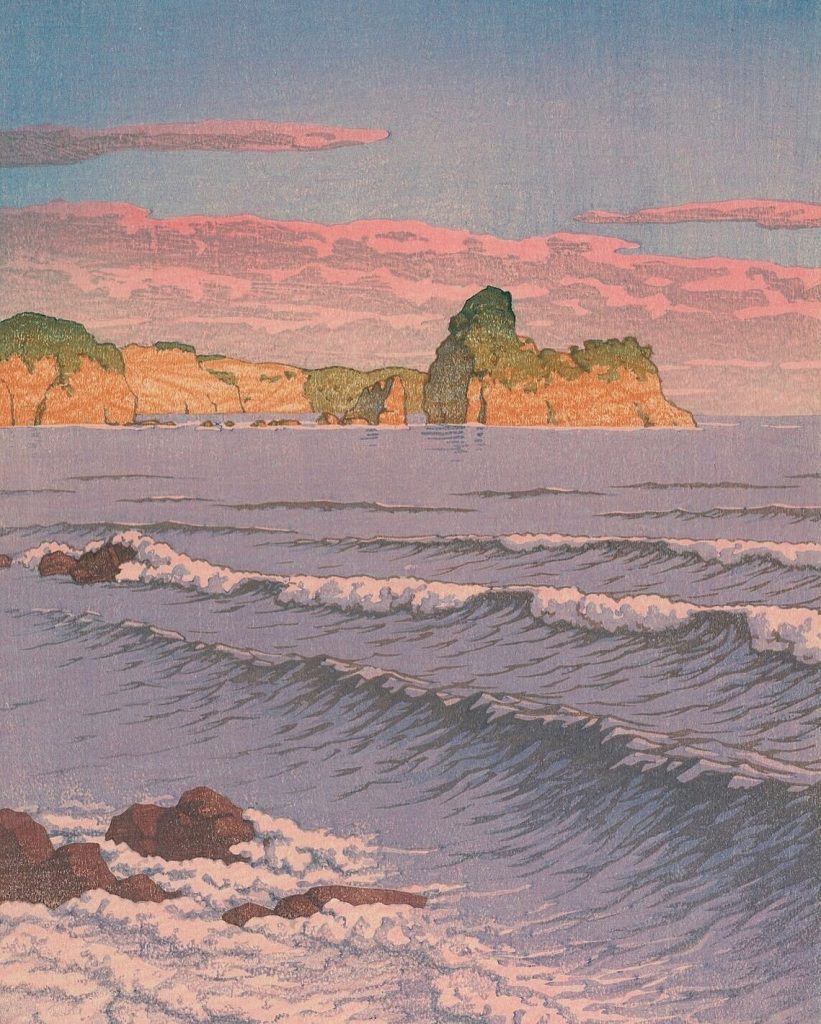
The artist who mastered the sunset
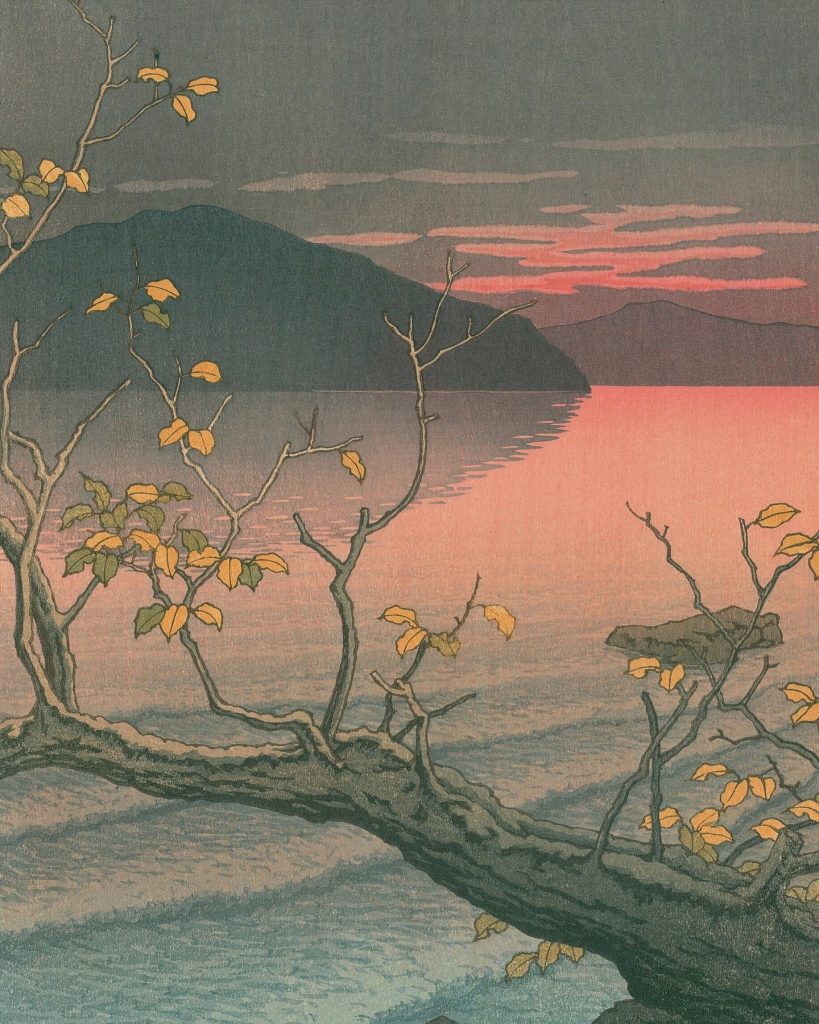
There’s something unspoken in the way the sky folds into itself during sunset. It’s not just the fading light—it’s memory, warmth, silence, and time passing all at once. And somehow, one man, a quiet soul in 20th-century Japan, found a way to bottle that magic in his prints. Kawase Hasui didn’t just paint landscapes—he whispered stories through color and light, turning the ordinary into something sacred. This is about the man who didn’t chase fame or spectacle. He simply followed the light—and captured its final breath like no one else ever could.
The Quiet Genius Behind the Glow
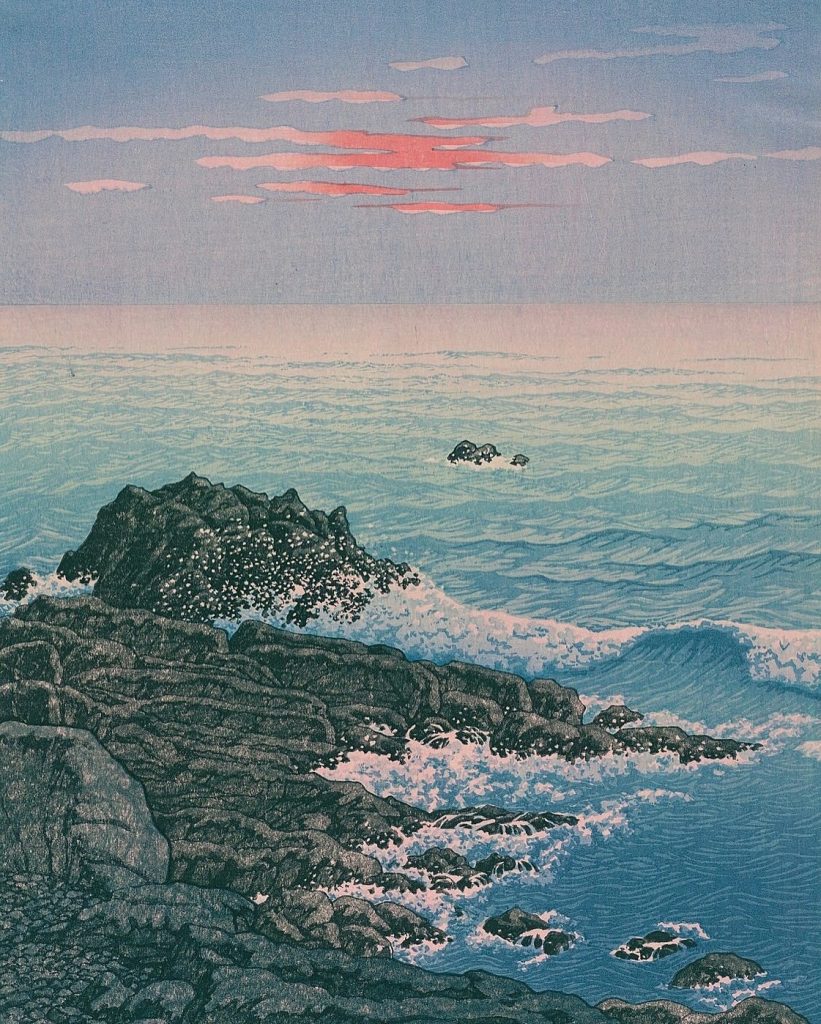
Kawase Hasui wasn’t born into fame or fortune. He didn’t belong to a celebrated art family or move in the loud circles of modernist painters shaking up the world at the time. In fact, for much of his life, Hasui was just… still. Soft-spoken. Grounded. A man deeply in love with the land he walked, and the skies he saw.
He was born in Tokyo in 1883, a time of dramatic transformation in Japan. The country was shifting—politically, industrially, culturally. While many artists dove into this chaos, painting wild expressions or abandoning tradition, Hasui took a different path. He walked it. Literally. He traveled across Japan by foot and train, sketching scenes of countryside paths, ancient temples, fishing villages, and rice fields at dusk.
But what set him apart was his obsession with light—not the dazzling, noonday brightness, but the light that comes at the end of a long day. The kind that says goodbye gently. That’s where Hasui lived creatively: in the sunset. His palette was subtle but emotionally packed. Faded oranges, deep purples, soft blues melting into each other. You didn’t just see the light in his prints—you felt it.
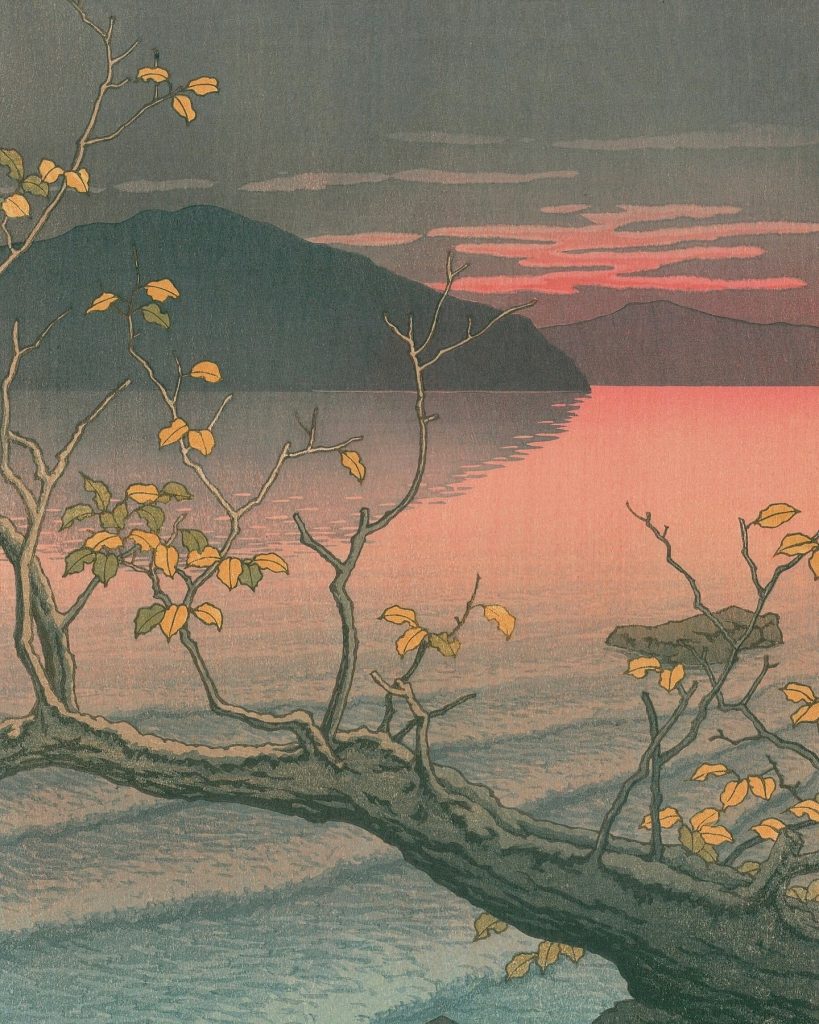
Why His Sunsets Still Speak to Us
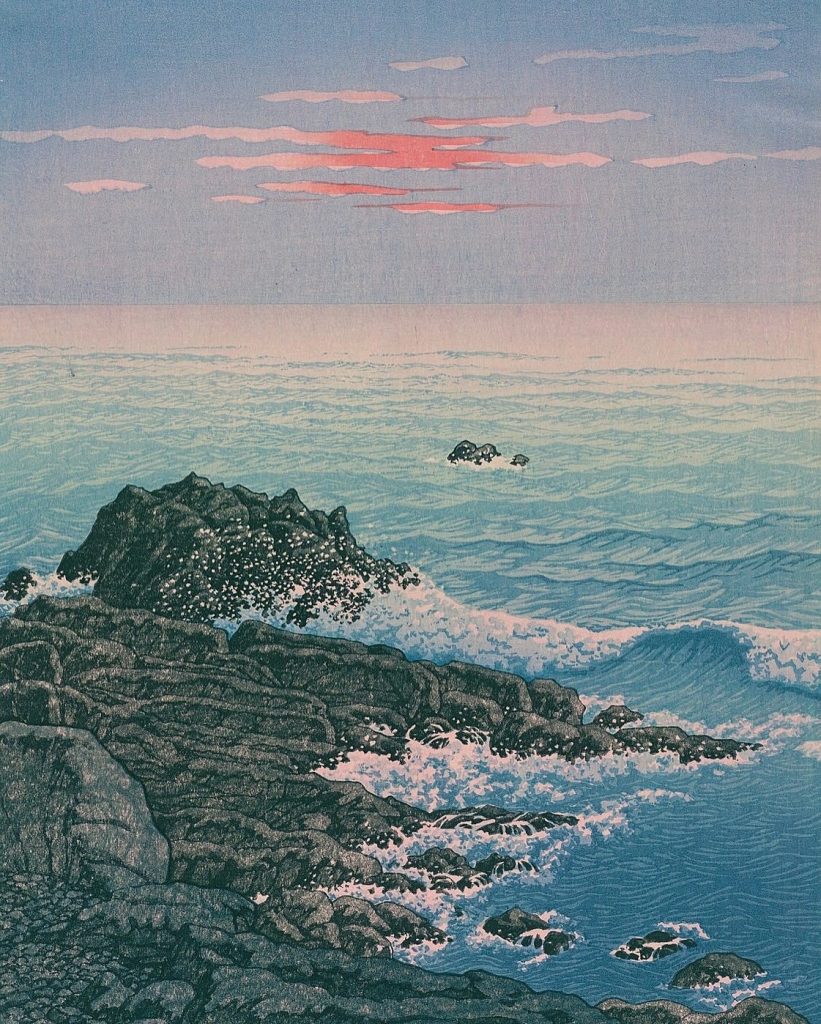
It’s easy to look at Hasui’s work and say, “That’s beautiful,” and move on. But if you stop—really stop—you’ll see something deeper. These weren’t just pretty pictures of landscapes. They were emotional maps. His sunsets weren’t loud or exaggerated. They were honest. Sometimes melancholic. Often quiet. Always human.
You can sense the passage of time in his skies—the kind of time we often overlook in daily life. That moment right after a long walk when you look up and everything feels just… right. That’s what Hasui mastered. He made prints that mirrored the peace we don’t even know we’re craving.
And he did it through a dying artform—woodblock printing. At the time, many considered it old-fashioned, outdated. But Hasui believed in its soul. Working with famed publisher Watanabe Shōzaburō, he revived it through what’s now known as the shin-hanga movement—a modern take on traditional Japanese printmaking, influenced by Western realism.
It wasn’t just technique, though. It was his heart. Hasui didn’t insert himself into the art—he became invisible in it. No brash strokes, no ego. Just a man quietly letting nature speak.
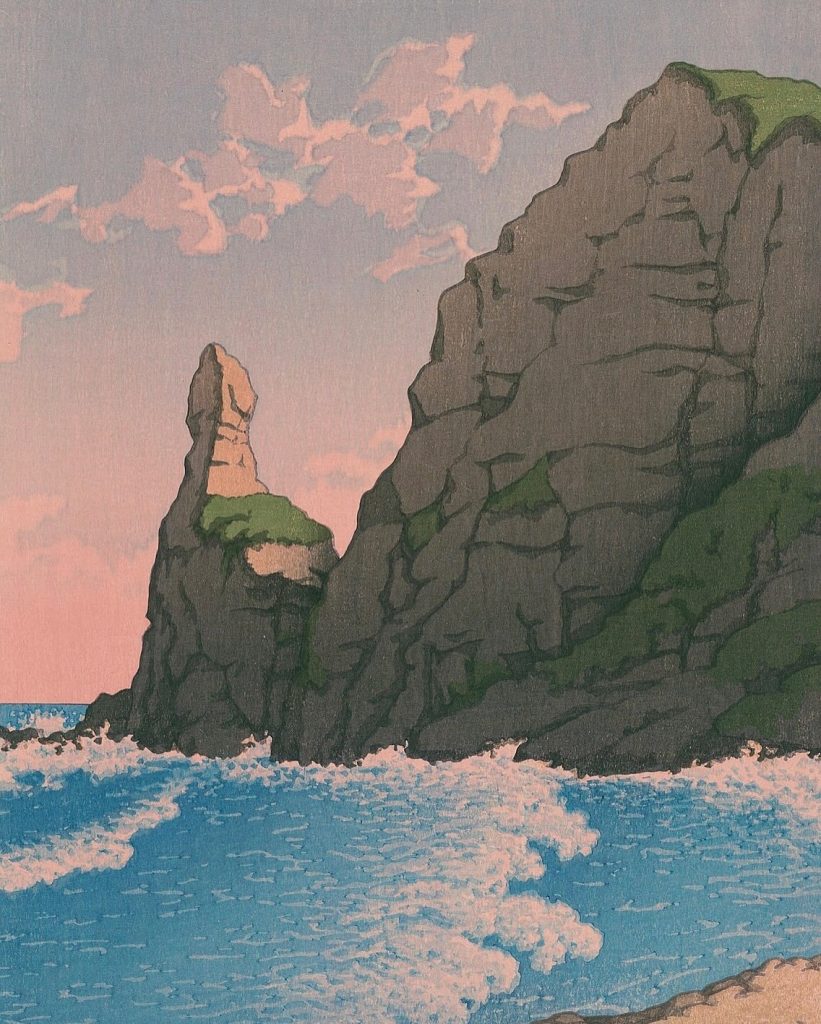
A Legacy Made of Light and Stillness
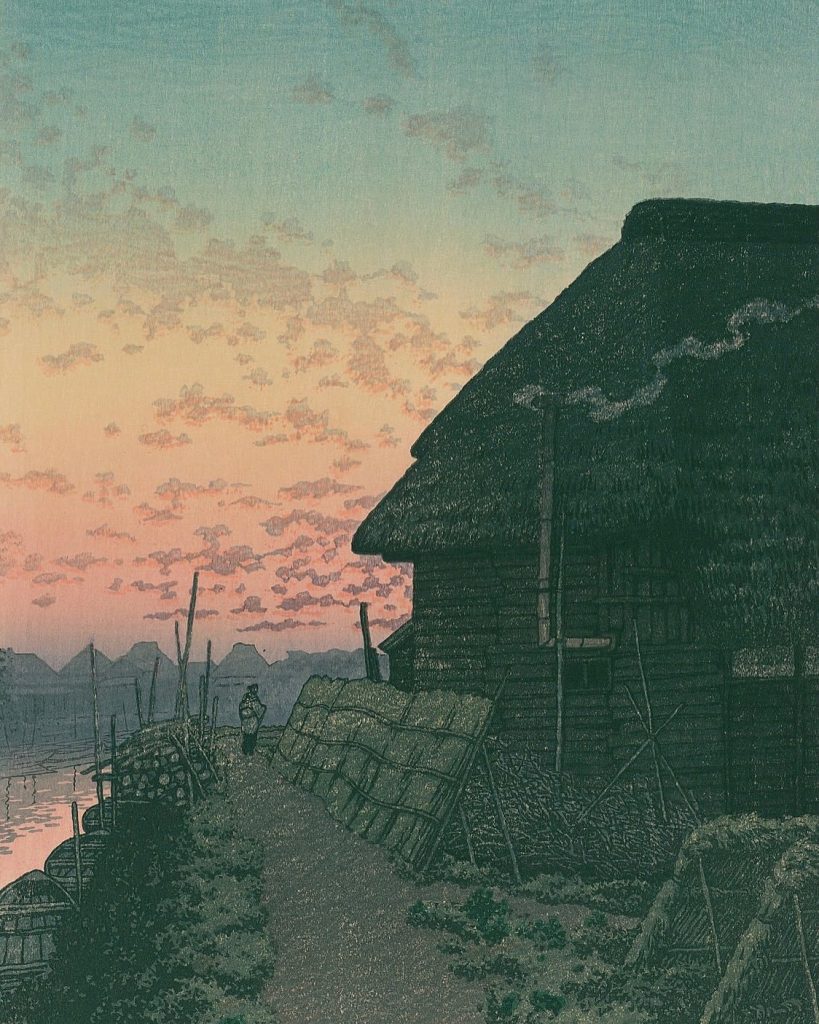
In 1956, just a year before his death, Hasui was named a Living National Treasure by the Japanese government. That title isn’t handed out lightly. It’s reserved for people whose life’s work becomes a cultural pillar. A way of saying: “You’ve preserved something sacred for the rest of us.”
And Hasui did just that. Not through politics or speeches. Not by shocking the world. But by making us look again at things we thought we’d already seen. A tree at twilight. A farmhouse before nightfall. A fisherman standing by the water. Mundane scenes that he turned into poems of color.
What makes Hasui even more remarkable is how timeless he remains. In a world addicted to speed, flash, and over-saturation, his prints feel like a deep breath. A reminder that not all art has to shout. Sometimes, the most powerful work whispers.
His pieces now hang in major museums across the world. Art historians admire his balance. Collectors chase his original prints. But more than anything, regular people connect with him. His sunsets don’t belong to galleries—they belong to memory. That’s why they still move us.
Because even though the world has changed, the feeling of standing still in a golden moment hasn’t.
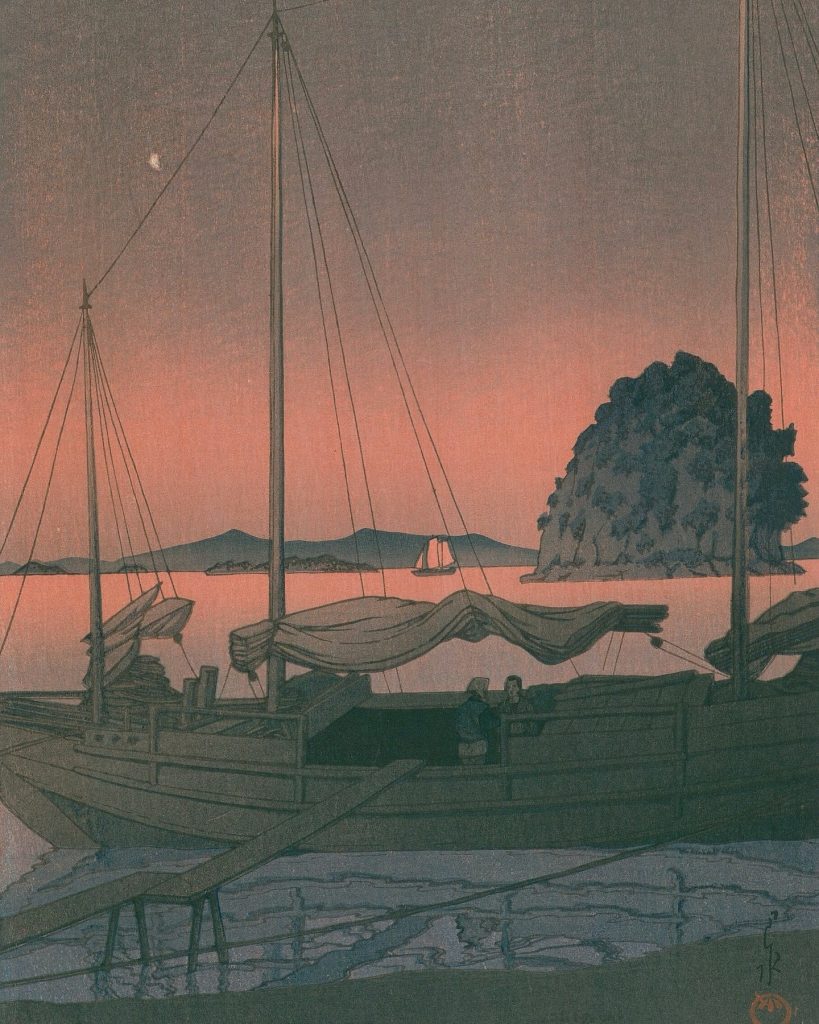
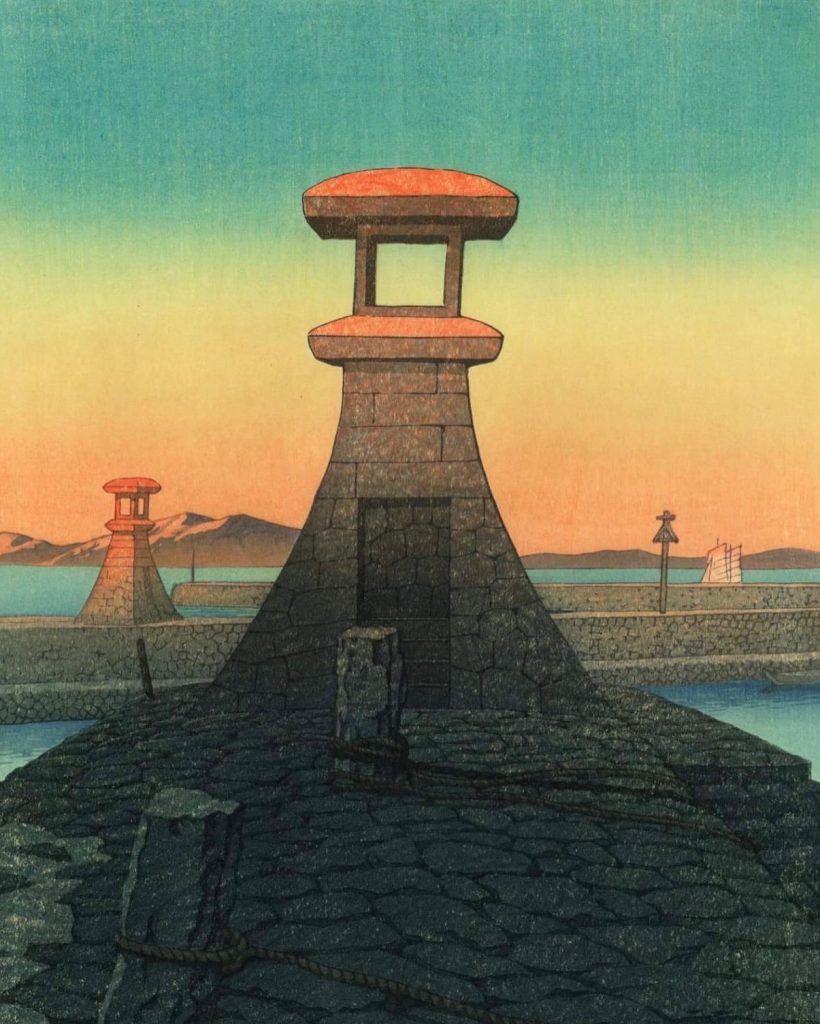
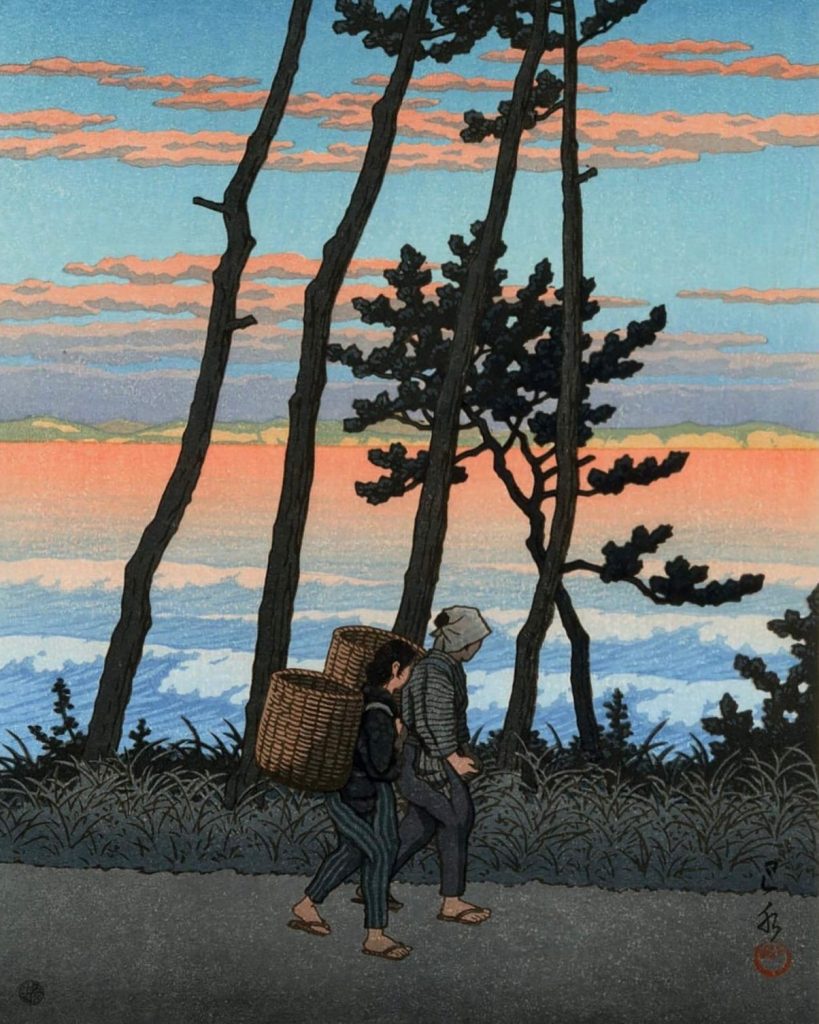
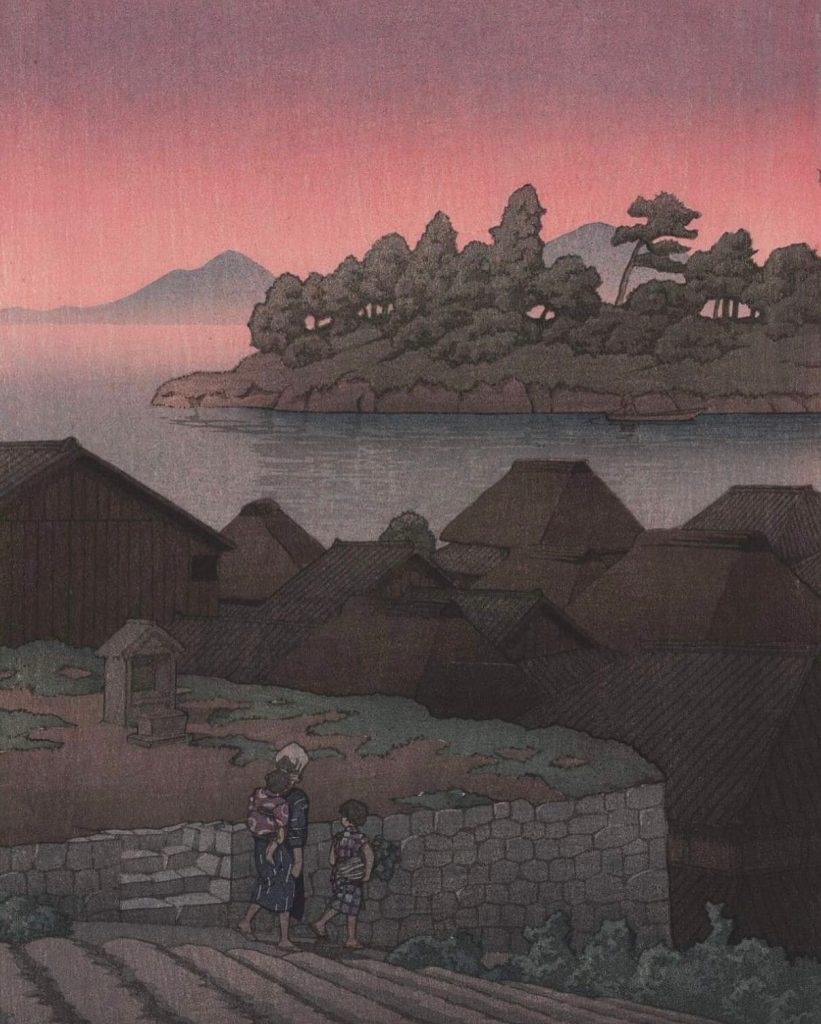
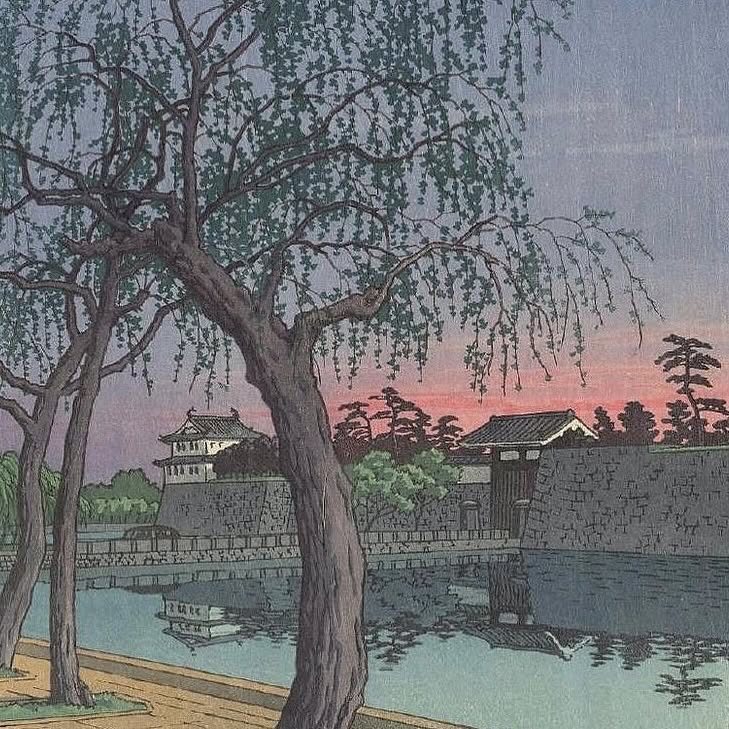

Daniel Reed is a curious mind with a passion for breaking down how the world works. With a background in mechanical engineering and digital media, he turns complex ideas into easy-to-understand articles that entertain and inform. From vintage tools and modern tech to viral internet debates and life hacks, Daniel is always on the hunt for the “why” behind the everyday. His goal is simple: make learning feel like scrolling through your favorite feed — addictive, surprising, and fun.
